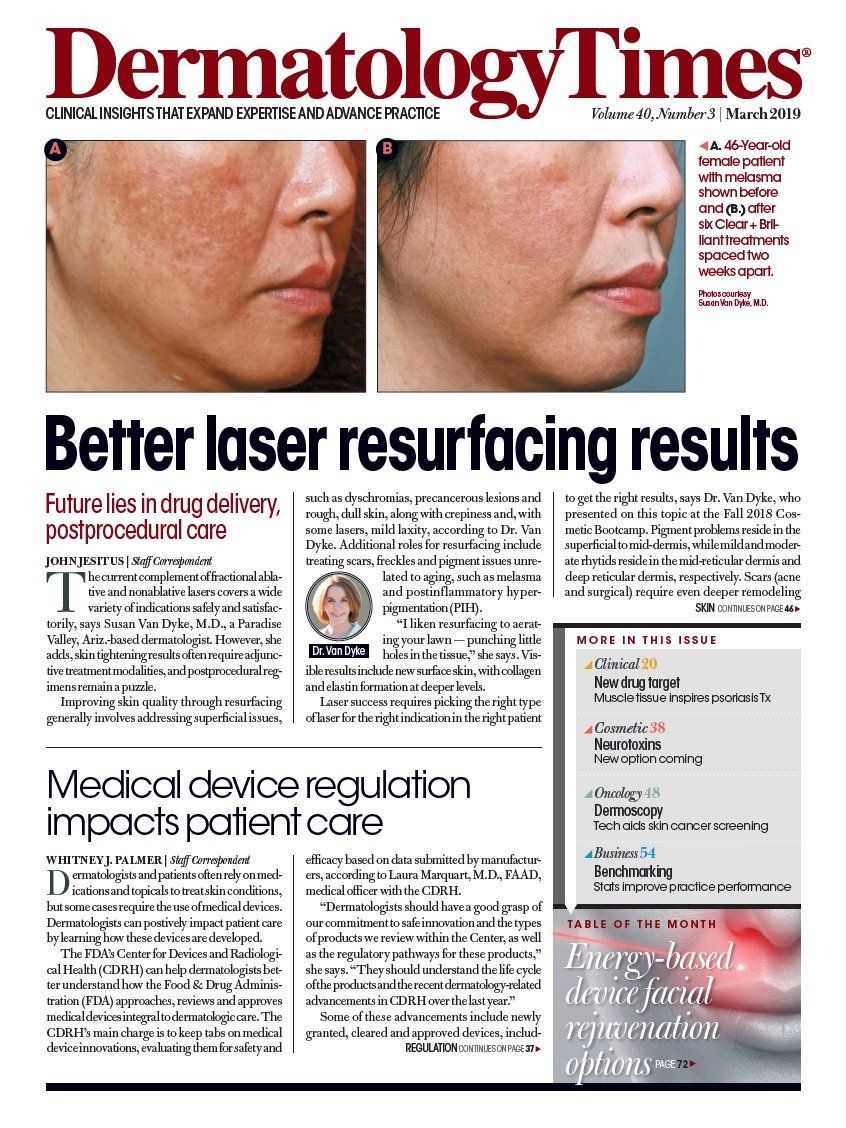- Case-Based Roundtable
- General Dermatology
- Eczema
- Chronic Hand Eczema
- Alopecia
- Aesthetics
- Vitiligo
- COVID-19
- Actinic Keratosis
- Precision Medicine and Biologics
- Rare Disease
- Wound Care
- Rosacea
- Psoriasis
- Psoriatic Arthritis
- Atopic Dermatitis
- Melasma
- NP and PA
- Skin Cancer
- Hidradenitis Suppurativa
- Drug Watch
- Pigmentary Disorders
- Acne
- Pediatric Dermatology
- Practice Management
- Prurigo Nodularis
- Buy-and-Bill
Publication
Article
Dermatology Times
Settlement or litigation: What should I do?
Author(s):
In this month's Legal Eagle column, David J. Goldberg, M.D., J.D., offers his insight on when to settle a malpractice lawsuit outside of court and when to take take it to trial.
In this month's Legal Eagle column, David J. Goldberg, M.D., J.D., offers his insight on when to settle a malpractice lawsuit outside of court and when to take take it to trial. (Monika Wisniewska - stock.adobe.com)

David J. Goldberg, M.D., J.D.

Dr. Skin missed seeing a melanoma on his patient. It was present when he saw her, but he just did not see it. Two years after that visit, the lesion is biopsied by another physician. The depth 1.3mm and a sentinel lymph node is positive for metastatic disease. The former patient, now plaintiff, sues Dr. Skin for negligence. The plaintiff’s attorney offers to settle the case prior to going to court for $1 million dollars. Should Dr. Skin do so?
The first question to be asked is: “Was Dr. Skin negligent?”
If it can be argued that the duty of a reasonable physician would have been to diagnose the melanoma earlier and Dr. Skin did not do so, then he has breached his duty as a reasonable physician. If there is then a connection (nexus) between that breach and damages, then Dr. Skin would be considered negligent.
All would agree that metastatic disease would fall into the category of damages. There could be a significant economic loss to the patient, and, if she dies, that economic value is established in terms of actuarial analysis of how long she might have lived. That might be much more than $1 million. The but is: Dr. Skin is not certain he was negligent. Should he settle or go to trial?
There is no question that the standard approach is one of “marching to trial.” However, the march to trial is a multi-year process that includes discovery, depositions, pre-trial hearings, various maneuvers and then trial. There are no guarantees. Dr. Skin, like most physicians, is not sure he has the emotional strength to go through this process. He had even been thinking of retiring.
In reality the majority of medical malpractice cases do settle out of court. One of the reasons for this is that cases are very expensive to investigate and prosecute. Litigation is very time consuming and victims often wait years to receive anything. The average in-court payout against all negligent physicians in the United States is $1 million to $4.5 million. The average settlement is for $500,000.
Since there are no guarantees, the decision becomes a balancing act. Of note, successful lawsuits against hospitals in the United States occur about 50% of the time; while successful lawsuits against physicians occur only 33%. Hospital payouts are often much higher than those against physicians.
The economic value of a case may also be determined by where it is brought. California and Texas have caps on the dollar amounts for pain and suffering. No state has a cap on medical expenses, lost income and lost future earnings. This could be a large number in this case.
If a case is settled, it should also settle all the plaintiff’s related bills ((Medicare, Workman’s Comp, ERISA, etc.). In addition, the settlement should be for total dollar amount without a breakdown of categories.
Having looked at the issues, it should be emphasized that the incidence of claims is still fairly low for dermatologists. Although dermatologists constitute 1.4% of the total physician population, only 0.7% of claims are against dermatologists. In addition, only 2% of truly negligent acts result in medical malpractice claims; while only 17% of all malpractice claims result from truly negligent acts.
Among dermatologists, the most common reasons for lawsuits are wrong site, functional outcome, post-procedure outcome, cosmetic outcome, recurrent tumor, improper consent, delayed diagnosis, and misdiagnosis.
Dr. Skin will ultimately need to make a decision as to whether to settle or not. There are no guarantees. Settlement will always be difficult, but sometimes is the best approach. Lastly, even if he retires, he will still have potential liability whether or not the case settles.







